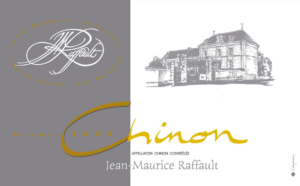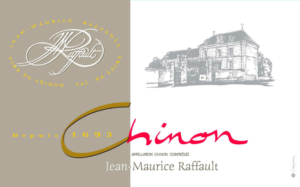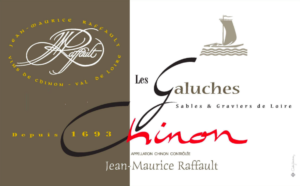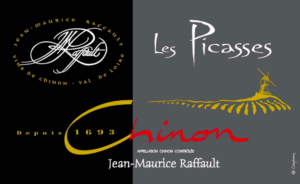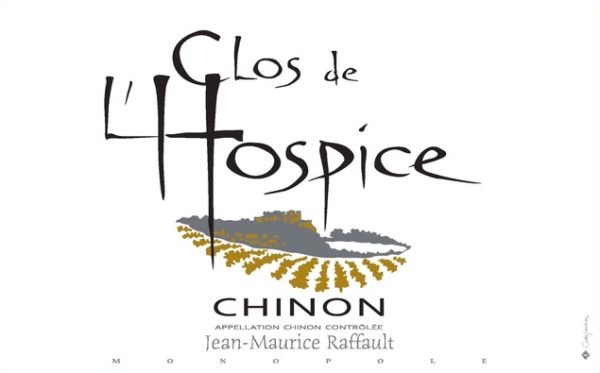
Chinon – Clos de L’Hospice
$1.00
| Country | France |
|---|---|
| Region | Loire |
| Producer | Jean-Maurice Raffault |
| Size | 750mL |
| Style | Red |
| Practices | Organic |
| Grapes | Cabernet Franc |
| Other Features | Indigenous yeasts, Unfiltered |
Rodolphe Raffault of Domaine Jean-Maurice Raffault replanted and revived Clos de L’Hospice, one of Chinon’s greatest sites, in 2008. Raffault has cultivated the Clos fully organically since the replanting. This extraordinary, one-hectare vineyard is a steeply sloped natural amphitheater with limestone soil. It faces south-east, overlooking the Vienne River, opposite the Château de Chinon. Once owned by Rabelais’ descendants, the Clos was highly prized in times past and was regularly mentioned in historical documents. It belonged to the convent of Calvarian and Augustinian nuns from the 17th century through the French Revolution, where it served as a source of income for their hospital – hence its name: the Clos de L’Hospice. Preferring to tend to their vegetables, in 1876 the sisters allowed local vignerons to maintain the vineyard. The nuns kept the wine in poor vintages for their patients’ consumption at the Hospice and sold off the good years at profit. This arrangement continued until the vineyard was devastated during the Phylloxera epidemic.
Despite various projects, the Clos remained unplanted with vines until 2008. Amazingly enough, up until the 1980s, the land was used as a garden by hospital patients. The hospital relocated in 1980 and sold the land, which enabled the Clos de L’Hospice to eventually become a vineyard once again. In 2008, Rodolphe Raffault revived the site for his domaine in cooperation with the town of Chinon and an investment group who had undertaken the renovation of the Château – itself a national historic monument – along with the construction of new residences at the site of the former convent. In 2008, Raffault planted 0.65 hectares in the Clos with pre-WWII selection massale Cabernet Franc vines to attain a vineyard that is as close as possible to the original. In June of 2014, he planted the remaining one-third of a hectare of vines on limestone terraces. The first vintage was 2011.
The warm Fall 2016 days ensured exceptional maturity and concentration. Raffault picked the Clos last, on October 21st, two weeks after his Les Galuches and several days after the Les Picasses and Clos d’Isore. The grapes were harvested by hand and given a long, one-month maceration period followed by frequent remontages. The 2016 vintage was aged in five new 500 litre barrels, for 16 months. After the malolactic fermentation in cask finished, Raffault did not add sulfites and also chose not to rack the young wine. Rather, it remained protected under the natural CO2 produced by the malolactic fermentation. Before assemblage in early 2017, Raffault replaced the CO2 with inert gas to prevent any oxidization. Sulfites were not used during any phase. The 2016 Clos de l’Hospice was bottled on Dec. 21, 2017. Production was 488 cases. The Clos was not touched by the April 2016 frost and the vines did not suffer due to the mid-summer heat, “a sign of a great terroir” observes Rodolphe Raffault. “The 2016 is the richest, densest and most structured Clos to date.”
About the Producer

The Chinon appellation covers both banks of the Vienne River, which is a tributary of the Loire. The appellation encompasses 19 communes and has a total area of 2400 hectares. Its soils and climate are perfectly suited to the cultivation of the Cabernet Franc grape.
The Raffault family began cultivating vines in Chinon 14 generations ago, when their ancestor, Mathurin Bottreau, bought his first parcel of vines in 1693. Today, they owns 50 hectares of vines in 7 communes. The Cabernet Franc vines average 35 years of age and 10 hectares within these sites are 50 years of age. The Chenin Blanc vines average 20 years of age.
The late Jean-Maurice Raffault, father of the present manager and winemaker Rodolphe, was one the great personalities of Chinon. Upon taking over the family domaine in 1973, he revolutionized local practices. First, he abandoned polyculture in favor of the cultivation of only wine grapes. Beginning with only the 4.5 hectares he had inherited from his father, he purchased and planted some of the finest known sites of Chinon, expanding the domaine to 50 hectares - J.M. Raffault is the largest shareholder in Les Picasses vineyard. But most importantly, he began to vinify each parcel separately to ensure the typicity of each terroir and he used the name of the individual sites for the respective wines. No one has done this before! The practice of naming Chinons with site names is now commonplace in the appellation. Rodolphe Raffault succeeded his father in 1997, after completing his studies at the Dijon University school of oenology.
Vinification practices: the maceration period ranges from 15 to 28 days. Rodolphe continues the tradition of aging the Chinons in neutral oak casks that are more than 10 years old. The impressive cellar houses 900 barrels and is the largest in the region. Maturation takes place over 18 months in three huge caves cut into the limestone cliffs, protected from light and remaining at a constant temperature of 56 degrees and 85% humidity. Racking is done from barrel to barrel, in the traditional method, which helps to clarify the wines along with a later fining with egg whites. The wines are not filtered.
Farming practices: Certified organic.
Jean-Maurice Raffault
VIDEO
Equine Décaivaillonage at Clos de l'Hospice
Note: "décaivaillonage" is plowing.

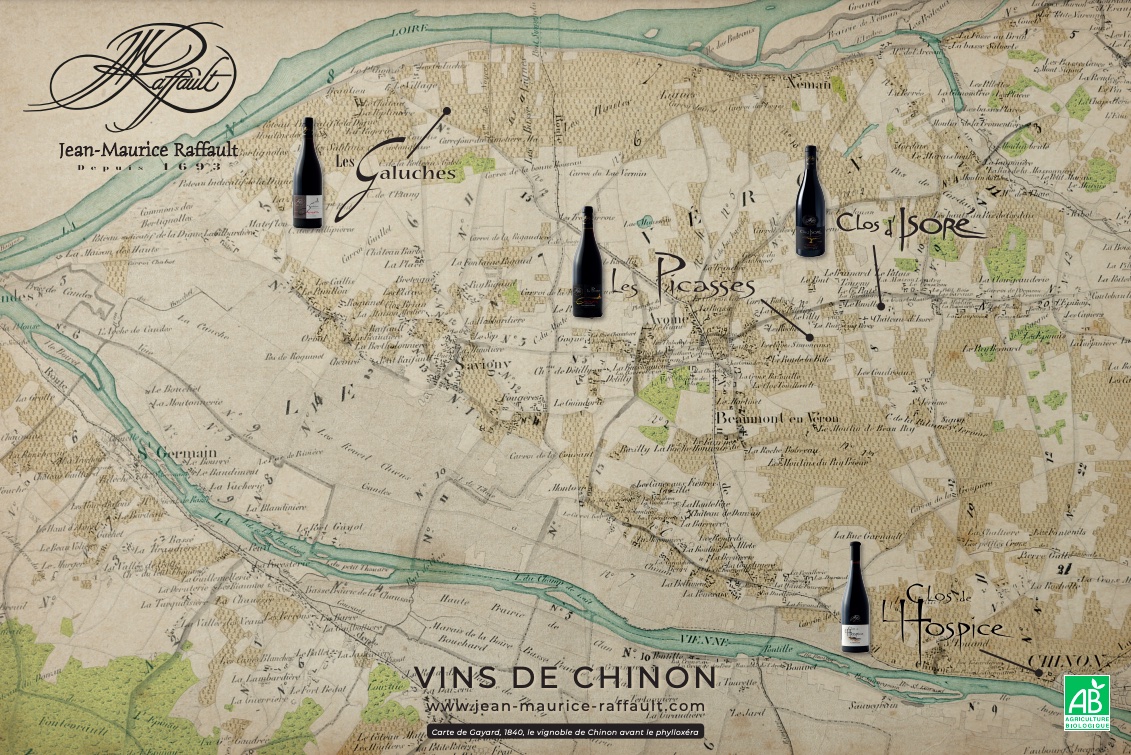

related products
-
Jean-Maurice Raffault
Chinon Blanc
-
Jean-Maurice Raffault
Chinon Rouge
-
Jean-Maurice Raffault
Chinon – Les Galuches
-
Jean-Maurice Raffault
Chinon – Les Picasses

